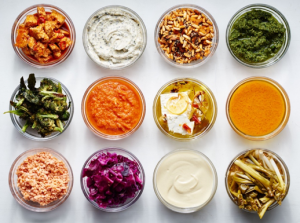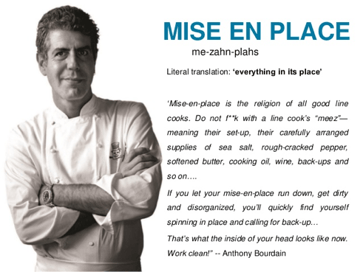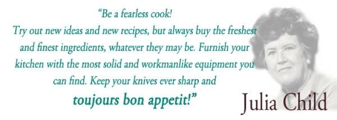5 Reasons Popular Marketing “Strategy” Is Killing Revenue Growth
Sometimes you need to take the gloves off. To state the bold truth. And with any luck the truth will offend someone or at least create disagreement —...
5 min read
![]() Rogue Marketing
Sep 10, 2022 1:00:00 AM
Rogue Marketing
Sep 10, 2022 1:00:00 AM
You live and work in a fast-paced business climate. Attention now. Activity now. Results now. (Or, if you consider yourself a bit more realistic… nearly now.)
 Here at Rogue we work on strategic blueprints that take anywhere between six and 12 weeks…
Here at Rogue we work on strategic blueprints that take anywhere between six and 12 weeks…
We lay Rapid Foundations in 60 days…
We point to advertising trajectory that happens within three months…
First year transformation is almost always unrecognizable…
With a bit of perspective it’s easy to see just how lightning-fast efforts like these truly are. And, the snowball effect on your marketing strategy plays itself out the longer you let things run, provided there’s ongoing optimization along the way.
“Businesses already ‘know’ transformation takes time, yet it’s so common to hear things like:”

There’s a universal desire to move fast and scale predictably.
This is absolutely the type of business problem a growth-oriented smarketing (sales and marketing) agency like Rogue love to solve.
So that led this group of Rogue marketers to consider:
 The answer was found in the culinary world. There are at least 141 cooking shows on TV/streaming these days (with plenty more not accounted for). Who Wants to Beat Bobby Flay? Hell’s Kitchen. Chopped. Next Food Network Star. Ace of Cakes. Iron Chef. Baker or Faker. The list is long, and it includes 434 hours of cooking aired every week…without including what’s available to stream. People are fascinated with beautiful food presentations, exciting experimental creations and the thought that we, yes we, might be able to do something similar ourselves. And yet Pinterest boards are full of fails that prove it’s not anywhere near as easy as it seems.
The answer was found in the culinary world. There are at least 141 cooking shows on TV/streaming these days (with plenty more not accounted for). Who Wants to Beat Bobby Flay? Hell’s Kitchen. Chopped. Next Food Network Star. Ace of Cakes. Iron Chef. Baker or Faker. The list is long, and it includes 434 hours of cooking aired every week…without including what’s available to stream. People are fascinated with beautiful food presentations, exciting experimental creations and the thought that we, yes we, might be able to do something similar ourselves. And yet Pinterest boards are full of fails that prove it’s not anywhere near as easy as it seems.
There are two specific insights that chefs can teach businesses about marketing strategy:
 For years and years, there has been an unseen practice taking place in restaurants the world over. It’s a French term that you may not be that familiar with, but has become more visible at casual dining establishments that there’s a good chance you have been to.
For years and years, there has been an unseen practice taking place in restaurants the world over. It’s a French term that you may not be that familiar with, but has become more visible at casual dining establishments that there’s a good chance you have been to.
Mise en place. It’s a phrase that means breaking down into parts and putting everything in its place. As Wikipedia states: “Mise en place refers to the set up required before cooking…organizing and arranging the ingredients that a cook will require for the menu items that are expected to be prepared.”
“If you’ve been to a Jimmy Johns, Chipotle, Salata or Pie Five, you’ve visibly seen mise en place at work. ”
All the ingredients are prepped and laid out, ready for assembly (scale). With all the preparation you’d need to do for the task at hand completed in advance, the focus is on execution. Once the right environment has been created and the ingredients are prepared and readily available, it’s less of a surprise how they can be so “freaky fast” with your sandwich order.
It’s become noticeable on the kitchen turnaround shows as well. Seeing the back of house and looking at the system created to improve quality and efficiency has grown in popularity and has come out of obscurity. The concept has significant business implications.
Consider this: There are many parts to a digital advertising campaign. Here is just a sampling:

And that’s not exhaustive—it really is so much more than just an ad. YET, adopting a mise en place approach means that you have broken everything down into its parts. You’ve identified where the right search traffic is. You know messages that resonate, and messages that don’t. You’ve created the required pixels. You’ve identified the available cash. You know what to watch in the data results. Each piece is an assignment unto itself, and the real value and magic comes when the right amounts of each element come together to help you achieve your desired outcome.
There’s an unsexy secret in the kitchen: it’s the system that makes it all work. It’s the same with your marketing strategies.
Mise en place is certainly a kitchen tactic, but chefs know it’s actually a state of mind. Being well prepared and having all your tools in line removes constraints, fosters experimentation, increases speed, and facilitates great outcomes. And business-wise, isn’t that everything you want?
State of mind is really where the culinary world seems to understand the value of a system in ways businesses have yet to do. While the casual observer sees the beautiful dish, the chef can see deeper. Chefs look at the incredible process required to create that dish: sourcing fresh ingredients, prepping them, preserving them, pairing them, promotion, cooking technique/expertise, time, service staff training, and so much more.
Let’s take it business-side (sort of). Businesses ask why results don’t come faster, or why creative assets take so long. Have you ever made or been part of creating a feast at your home? How long did that take you? What kind of hurricane was generated as you prepared your components? What would have made it easier?
This post may take you five minutes to read and an hour or two for our team to write. But that was just one step in the journey. The right question had to be asked. Research conducted. Examples found. Time to marinate on the idea. The copy was written. Edited. Rewritten. Optimized for findability. Uploaded to the domain. Coded. Edited. Creative graphics generated. And a whole bunch of other little steps that no one ever sees, but have been fused together into a system that actually makes the process move a whole lot faster.
That’s just for a blog post. What goes into those email messages you want to build? Ads you’d like to promote? Marketing automation campaigns? Social strategies? Newsletters? Landing pages? These are the tactics and there are a lot of steps. To get them right, you need the initial marketing strategy and foundation—in other words, the marketing system. That’s where the real war is won.

When you break a challenge down into parts, an overwhelming deliverable/campaign/strategy becomes possible and attainable. Once your “work station” (marketing system) has been adequately prepared with the right ingredients (insights, messages, platform strategies, funding thresholds, assets, etc.), doesn’t it stand to reason that you are now best equipped to successfully assemble result-generating programs and innovate or pivot more strategically? Slowing down gives you the foundation—and the state of mind—to actually speed up…counter-intuitive as that may seem.
Next time you’re trying your hand at building a feast in the kitchen, remember that the process you’re taking on is not unlike the one your marketing strategists go through to achieve transformational outcomes. When you see the beautiful dish, look a bit deeper and consider the incredible process that had to be followed to make it possible…and repeatable.
Rogue’s Value Proposition Bundle contains tools and templates to help you quickly communicate what makes your business different, and why those differences are valuable.
Sometimes you need to take the gloves off. To state the bold truth. And with any luck the truth will offend someone or at least create disagreement —...

Too many organizations attempt to implement digital marketing strategies without counting all the costs.

Agencies are all the same. Or so you may believe.It’s easy to see why. The language is often consistent. Websites promote seemingly identical...